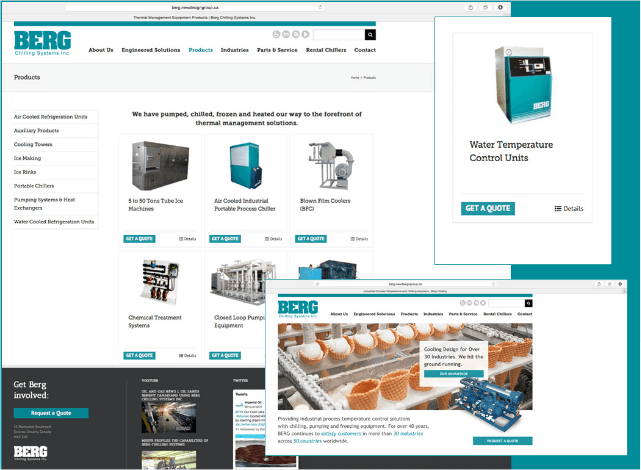1. INTRODUCTION
A great manufacturing company marketing strategy is only as successful as the brand is stands on. No matter how inventive and creative the company’s marketers may be, they won’t be able to bring new leads to the sales team if they don’t have a strong brand to promote.
But what is a brand? It’s far more than a logo that is scattered over your publicity material! There may be many different definitions out there, but many fail to encapsulate what a brand actually is.
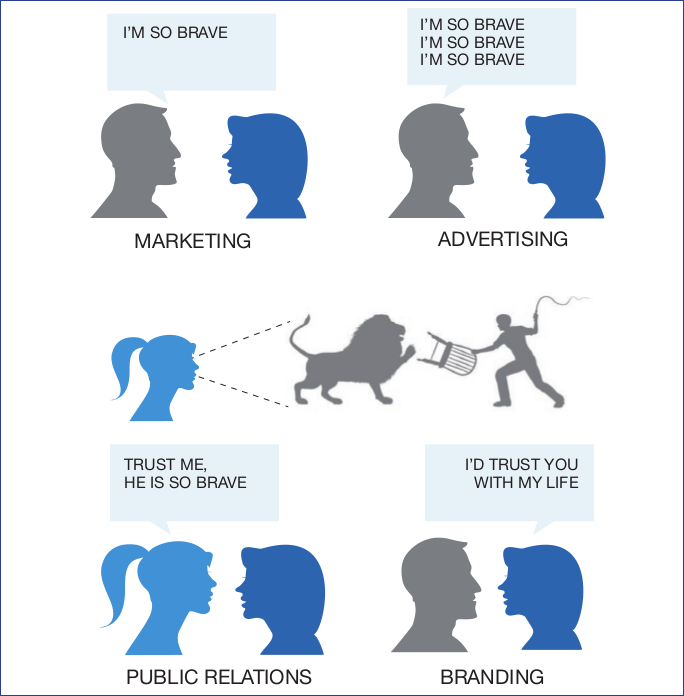
Just think of your manufacturing company brand as your promise to customers – it must demonstrate what you offer, what type of customer experience they can expect when dealing with you, and what makes you better than your competitors.
If your manufacturing company continually fulfils its brand promise, your customers will grow to love and trust your brand, they will believe in its superiority, and choose it over all others time and time again. As your company’s reputation grows, new customers will choose your brand based on reputation alone.
“A brand for a company is like a reputation for a person. You earn reputation by trying to do hard things well.”
Jeff Bezos
American business magnate and investor
If you want your manufacturing company to be successful and to hold its own in a competitive global market, it’s time to get your branding right.
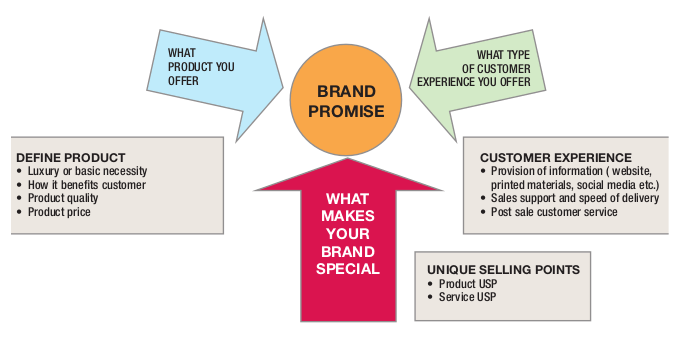
“A brand is a person’s gut feeling about a product, service, or company.”
Marty Neumeier
The Brand Gap
Think about a couple of the biggest brands in the world: the Mercedes brand promises a luxury car delivered with impeccable customer service; the McDonalds brand promises food you eat with your fingers delivered as fast as possible. Both companies and their customers are crystal clear about the brand promise.
2. DEFINE THE AIMS OF YOUR BRAND
To create your manufacturing company brand you must firstly understand your product.
2.1 UNDERSTAND YOUR PRODUCT
Ask yourself the following questions:
- What are you selling?
- Is your product base too wide?
- What benefits does your product offer the purchaser?
- Where are you positioning your brand?
- How is your brand better than your competitors’?
- Can you deliver what you promise?
YOUR PRODUCT – Make sure your customers are clear about what you are selling. They need to understand the type and
range of products you manufacture. But don’t overwhelm them with too much choice. If you manufacture kitchen furniture and expand to add carpets to your repertoire, you’ll be sending clients mixed messages. What are you best at? Carpets or kitchen units? There is such a thing as choice overload.
If your business focuses on manufacturing a narrow range of truly complementary products you will be able to more easily grow your brand awareness.
“A brand becomes stronger when you narrow the focus”.
Al Ries and Laura Ries
The 22 Immutable Laws of Branding
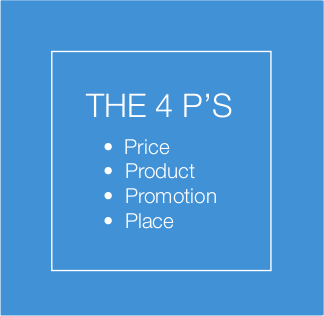 BENEFITS TO THE PURCHASER – Whether you sell direct to consumers or to other industries be clear how your brand benefits the purchaser. Your product may make consumers’ lives easier, safer or more fun. Your product may be a crucial component in aviation or car manufacture without which the end products will never get produced.
BENEFITS TO THE PURCHASER – Whether you sell direct to consumers or to other industries be clear how your brand benefits the purchaser. Your product may make consumers’ lives easier, safer or more fun. Your product may be a crucial component in aviation or car manufacture without which the end products will never get produced.
The aim is to paint an accurate picture in the customer’s mind about how your product compares to, and is better than, similar others already out there. To create customers who are loyal to your brand, you need to deliver products you have promised.
UNIQUE SELLING POINT – Furthermore you need to know how your brand compares to the competitors’. To get noticed in a crowded market place you need brand differentiation – how is your brand different from all the rest? In short what are its unique selling points?
If your factory has a high output capacity meaning you can fulfill the largest of orders within tight deadlines, make sure all your clients know this. Product supply chains are fundamental and this can give you a strong competitive edge over others with smaller factories.
If you’re an electronics manufacturing company which has launched a state-of-the-art mobile device offering something a little different, then ensure your brand makes this as clear as day.
If you prize yourself on having an exceptional post-sales customer service which goes above and beyond the normal, then your
brand must make this apparent.
“In order to be irreplaceable one must always be different.”
Coco Chanel
House of Chanel
DELIVERING WHAT YOU PROMISE – Your brand must not offer a product or service level that you can’t supply. Don’t brag you can supply a bespoke item within 24 hours if it sometimes takes 48. Customers can be unforgiving and if you don’t consistently deliver on your brand promise, your reputation will soon be severely damaged.
Case Study – When A Brand No Longer Explains its Benefits to the Customer
PSP Fabricating Inc. based in Canada produces pool safety covers, spa covers, solar blankets and associated accessories. The company was founded in 1998 and quickly grew due to its high quality products and exceptional customer service which met the needs and demands of its customers.
However by 2014 the company realised their brand was holding them back. The target market of 2014 had evolved from the 1998 equivalent – it expected to purchase from a modern, professional company which kept up with current advances in its field.
With an outdated brand, PSP Fabricating Inc. was starting to see sales dip. By reinvigorating the brand to modernise it, PSP were able to reassure existing clients that the company’s products had evolved with the times and were at the peak of quality and technological advances in the field.
2.2 UNDERSTAND YOUR CUSTOMERS
You must also understand your potential clients so you can be sure your product meets their needs and that you provide the type of customer experience that they want. Ask yourself the following questions:
- Who are you selling to? Directly to consumers, to dealers, retailers or to other industries?
- What type of message will appeal to your target market? Fun and funky, or serious and authoritarian?
- In which countries are you planning to sell? Your brand must give out the right message in different territories and across different cultures.
“True cultural connection is the Holy Grail for brands if they want to create an enduring emotional relationship with people.”
Adam Chmielowski
Flamingo
TARGET MARKET – however you brand your manufacturing company it must appeal to the right target market. B2B (business-to-business) promotion is a whole different ball game compared to B2C (business-to-consumer) selling. Other businesses will want to know they have a reliable manufacturing supplier that delivers goods at the right quality at the right time. Consumers want to buy from trustworthy companies that will make them feel good about their purchase and deal smoothly with any problems along the way.
The core values of the brand have to appeal to your target market and explain how you will meet their needs. Look at your brand through the eyes of your clients – are you sending them the right message?
BRAND ESSENCE – what type of personality should your brand have to effectively appeal to potential customers? Formal and conservative? Friendly and innovative? The brand’s tone of voice is critical to your manufacturing company’s success.
Brand tone of voice
– how you communicate to your clients on your website, in printed material and via radio and TV – the words, visuals and even the font used send out a specific message
Case Study – When A Brand Fails to Check Cultural Differences
Proctor and Gamble made a serious gaff when they undertook a marketing campaign for Camay soap in Japan. They used a popular European commercial which showed a man entering the bathroom whilst his wife was having a bath and touching her appropriately. For the Japanese this was quite offensive.
– how your sales staff talk to clients
– how you interact with clients on social media
– how your PR Manager talks to the media
And don’t forget, you will need to think carefully about your brand tone of voice if you are planning to sell in different countries, taking into account cultural expectations and business etiquette. A symbol or name that means something positive in one culture, may take on negative overtones in another. If you offend a culture you won’t be accepted into that market place.
3. DEFINE YOUR BRAND’S VISUAL IDENTITY
Only now is the time right to create the visual identity of your manufacturing company brand. And now is the time to work with a professional branding agency. Not only do they have the right graphic designer skills and experience, but they will also take time to understand your specific business – your USPs and your niche market – to create a timeless, memorable and appropriate brand that will see you safely on the road to success.
Now that you appreciate how many subtle messages the visual identity of your brand needs to send out, you can realise why so many brands get it wrong.
Case Study – When a Brand’s Visual Identity Fails to Impress
When Bic launched its ‘For Her’ pens in 2012, no doubt the company were astonished by the negative backlash they received.
However no adult woman will want to purchase a product that is so condescendingly designed and branded – these purple and pink monstrosities are only suited to 5 year old Princess Elsa wannabes.
3.1 LOGO
A professional logo design will be unique and attention grabbing. It will use appropriate colours that send out the right message to its audience. And to compete with the best loved manufacturing company brands, your logo must be bold, solid and dependable.
Red has a strong intensity and is associated with determination and courage.

Blue is linked with reliability, calmness and power.

Green is associated with environmental awareness, safety and honesty in most people’s minds.

“A color is as strong as the impression it creates.”
Ivan Albright
American Painter
Work closely with the experts when designing your logo. Get it right and your logo will be a solid foundation for the visual identity
of your brand. Take a short-cut here, such as hiring an amateur to create your log, and you will find yourself with a disappointing
logo – and if you stick with it, you’ll be putting off the inevitable – having to go through a very expensive rebranding exercise
a few months or years down the line.
However assuming you have heeded our advice and have a memorable and appropriate manufacturing company logo design, your
printed marketing materials can swiftly follow:
3.2 BUSINESS CARDS
These must be fully branded with logo, company name and contact details. Don’t skimp on the quality of the design nor the thickness of the card used by the printer. Far better to give a professional impression when first meeting a potential client than to leave them with a flimsy card you printed on your home printer – this approach will only send out the message that your
manufacturing company will never be able to produce quality products.
Always carry a supply of your business cards wherever you go – unexpected opportunities to discuss your product and services often arise.
3.3 BUSINESS STATIONERY
Never fail to take the opportunity to increase brand awareness. When quoting for a product or service, or issuing a receipt, use professionally designed headed paper clearly showing your logo.
3.4 BROCHURES
This is where your brand can really shine. Working with a professional graphic design agency, you can create a brochure that explains your brand promise fully. The brochure must be in the brand colour palette for brand consistency and images used should complement this.
Image selection is always critical; powerful images can change a mediocre brochure into an outstanding one. Images are instantaneously interpreted by the viewer – far quicker than the brain can process and understand the written word. And images evoke emotions – whether it is the kitchen of their dreams, or the car they have always longed for speeding along the open road, the viewer has a strong gut reaction to the picture: and they want that product.
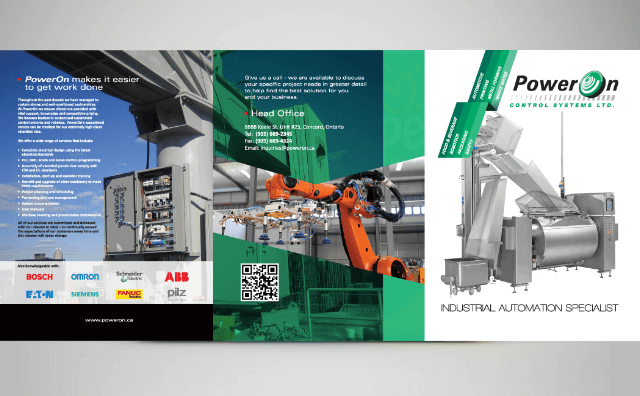
For some manufacturing companies, particularly those who produce parts or machinery, it may be more challenging to find an image that evokes a strong positive response. However invariably these kinds of businesses are selling to other industries rather than the consumer. The message in this instance is not to persuade the purchaser that their life will change for a better once they have their new kitchen or car; it is to showcase the company as professional, reliable, efficient and as the best one to do business with.
In all situations, images must be professionally shot if customers are to trust the company. A professional photographer can also get the best angle to show the product looking at its utmost best. Of course a professional photoshoot costs, but once you have a set of professional images, they can be used across all your customer facing materials.
If your saddle stitch brochure contains time sensitive information such as product lines or prices which may change, immediately your brochure has a limited time span. As soon as you introduce a new product, remove an outdated one or update your prices, your brochure is history.
Saddle stitch brochure – here is a word of advice to all manufacturing companies. Although you may like the idea of a stapled
booklet created from folded sheets of paper (saddle stitch is the correct terminology), just consider the implications of going down this route, even though it is a great opportunity to make huge impressions with images that span 2 adjacent pages.
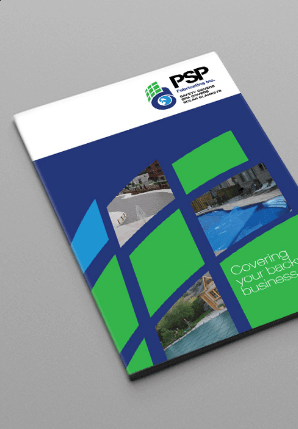 a) a saddle stitch brochure has a limited number of pages. Quite simply if there are too many the brochure will be too bulky to fold
a) a saddle stitch brochure has a limited number of pages. Quite simply if there are too many the brochure will be too bulky to fold
b) as the brochure is created from folded sheet, the final page count must be in multiples of four. Period.
Far better to create printed materials with a long life span – ones which can be printed in large numbers (bringing down the cost per unit) and which will stay relevant for many years.
Presentation Folder – in this instance a professionally designed presentation folder is created from thick card – it’s not bound or stitched in anyway but is sturdy enough to hold loose page inserts. Designed to comply with your branding guidelines but without time sensitive information, this beauty is destined to last a lifetime.
A4 and A5 sizes are both popular, and the interior cover can have small slots where a business card can be placed.
The product and service information which may change more frequently is then designed on separate loose inserts. Again these can be designed by a professional graphic designer to match your brand requirements, reinforcing the message that your company is a master in its trade.
The presentation folder concept is the most flexible available to manufacturing companies – not only can individual inserts be redesigned and reprinted as and when, but the contents of the brochure can be adjusted depending on who will receive them – a consumer, a retailer or they can even be used for press packs to issue to the media. A great cost effective option which negates the need to reprint a whole brochure when your products or prices are updated.
3.5 PRINT ADVERTISING
When you decide on print advertising for your manufacturing company, whether in a newspaper, trade magazine or on a bill board, your brand must shine through. An appropriate and impressive image should lead, one which showcases your brand promise either through professional shots of your products or lifestyle images showing how consumers benefit by purchasing your products.
3.6 RADIO AND TV ADVERTISING
For manufacturing companies who sell products directly to consumers, radio and TV advertising may be a sensible option. Whilst the costs of advertising on national TV may be prohibitive for many small companies, local TV and radio stations may offer more attractively priced advertising slots. So long as you want to target the viewers and listeners of these stations, this type of marketing can be beneficial.
You will of course need a short commercial to deliver your key messages succinctly – what you’re selling and what makes your brand special. Think carefully about your brand’s tone of voice. Will you impart plain facts or would your target market better appreciate something more light hearted – so long as it still gets the key messages across. And pick a professional voice over – someone who can breathe life in your commercial and make the viewer or listener take notice.
Case Study: A Memorable Voiceover For the Bay Brand
As CEO of the Bay, Canada’s largest merchandise retailer, Bonnie Brooks was the voice on all of the company’s radio ads during a 5 year stint. Her distinctive smoky voice was immediately recognisable – many loved it, some mocked it. However the radio ads with her voiceover soon became immediately associated with the Bay in listeners’ minds.
3.7 STAFF UNIFORMS
A savvy manufacturing company knows the power of brand impressions – spreading the word about the company by getting its name in front of as many people as possible. Branded staff uniforms are a cost effective way to do just this.
Whether seen by customers visiting a store or by people who see the company’s staff out and about, the branded uniform helps differentiate the company from its competitors. Smart uniforms create a positive impression and help project a corporate image.
Case Study – Intriguing Staff Uniforms to Increase Brand Awareness
When PowerOn wanted staff T-Shirts they opted for the logo tastefully displayed on the front. However the reverse of the shirt is where they make a big statement – the green swirls from the logo are shown in a big, bold format with no supporting words – guaranteed to intrigue the viewer and make a strong brand impression.
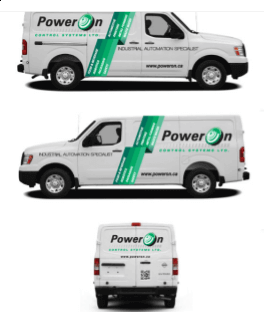 In addition staff who wear branded uniforms, either a polo shirt with an embroidered logo or a jacket with the company’s logo and tagline on the reverse, will feel part of the team. Staff uniforms can help staff morale and in turn the wearer will feel happy to be associated with the brand and act as an ambassador of it.
In addition staff who wear branded uniforms, either a polo shirt with an embroidered logo or a jacket with the company’s logo and tagline on the reverse, will feel part of the team. Staff uniforms can help staff morale and in turn the wearer will feel happy to be associated with the brand and act as an ambassador of it.
3.8 VEHICLE GRAPHICS
As with staff uniforms, branded vehicle graphics are a great way to improve brand awareness. A professional vehicle graphics design which is eye-catching and which shows the company logo clearly will make a memorable impression on the viewer – even at a subconscious level.
3.9 SIGNAGE
All manufacturing companies need fully branded signage. At the factory, at the store, on the roadside. Signage not only tells clients where your company is based but has to create a great first impression. A client who drives up to a warehouse where the building signage is shabby and badly designed will have second thoughts about entering.
Whereas a professionally designed sign, in keeping with the brand identity, will reinforce the message that this is a great company to buy from.
3.10 PRODUCT PACKAGING
Product packaging design is dictated by the target market. For manufacturing companies supplying parts and equipment to other industries, product packaging should be functional – clearly showing the manufacturer’s name and the contents on the package.
Case Study – When a Big Brand Gets its Packaging Wrong
Who knows what Pampers were thinking when they gave the green light for this product packaging. The packaging may be beautifully branded but the end results is simply disturbingly wrong.
On the other hand, packaging destined to be seen by the consumer has to be carefully designed and branded. The market place is overloaded with products, all in their shiny, attractive packaging vying for attention. Only those cunningly packaged to display the brand promise and show why they are better than the competitors are going to be added to the shopping cart.
4. CREATE YOUR CUSTOMER INTERFACES
It goes without saying that your online presence must comply with your visual brand identity – with regard to logo, colour palette and images used. However nowadays it’s not enough to have great looking web pages and social media accounts – customers want to be able to interact with you. They are far more likely to visit your website or social media pages to see if you can supply
what they need, rather than driving over to your store.
So as part of your brand promise, you must deliver the best online customer experience ever. Your website and social media pages must be fully branded and enable customers to achieve their objectives easily – to find out what you sell, to compare your products, to find out your prices and to ask questions and get a swift response.
4.1 WEBSITE
Your website homepage has a lot to live up to – if a visitor isn’t impressed in the first few seconds of arrival they will just bounce off. Impressive homepages are those that are well designed, show professional images and use an appropriate font.
Furthermore the visitor must be able to find what they need quickly. Navigation must be intuitive and simple. If they want to ask a question, request a quote or call-back, or order online, then you must fulfil their needs. Ensuring that your website provides an exceptionally positive experience for the user will mean they will remember your brand for providing its helpfulness and efficiency.
But choose what you offer carefully. If you are a manufacturing company start-up with few employees, don’t offer a chat online feature if you don’t have the staff to handle it. This will simply infuriate the visitor. If you want to offer the ‘request a call-back’ feature but know you can’t guarantee an immediate call back, make this explicit – state for example that you will call back the
client within 24 hours. Better still design the website functionality so that the customer can tell you the best time to call them the following day – then make sure you do so.
4.2 EMAILS
You will undoubtedly send emails to customers and potential customers on a regular basis. You may be responding to a quote request, sending over a requested e-brochure or issuing an e-newsletter to update your database about new products, special promotions or general company news. Emails are cheap and quick to send but make sure your emails are always professional in appearance.
Case Study – Web Design to Make Life Easy for Your Clients
When Berg Chilling Systems in Toronto, Canada, decided on a web redesign, they wanted to make it easy for clients to request a quote – and they also wanted more qualified leads. The final web redesign includes a ‘Get A Quote’ button on every page close to each product image. Furthermore the online quote form is very detailed – and prompts the client to divulge specific but relevant information about the equipment they are interested in purchasing.
Result? An easy-to-complete form which encourages only those who are genuinely interested in the company’s products, and results in a speedy response as the sales team already have all the information they need to make an accurate quote.

Emails sent to individuals should always show the sender’s name and company contact details in the signature. E-newsletters issued to the whole of your database should be ideally created on a template, which must be fully branded and contain good quality content.
The more professional your emails appear, the more your clients will believe you can deliver on your brand promise.
4.3 SOCIAL MEDIA
Social media can be a very effective tool to reinforce your manufacturing company brand identity:
- sharing thoughts and snippets to reinforce your brand’s personality (serious, pioneering etc)
- sharing quality information so people realise you are a brand which is an authority in its field
- responding quickly to customer’s comments, opinions and questions
Bear in mind that the Golden Rule of social media is to not spread yourself too thinly. People use social media to be entertained and to interact with others. So if you create pages for your manufacturing company on Facebook, Twitter, LinkedIn, Pinterest, YouTube, Instagram, be aware that you will need to monitor them all regularly to see if your customers are reaching out to you.
CONCLUSION
Manufacturing companies come and go. Make yours one that makes a positive mark by being clear what your brand promise is, and by getting your key messages in front of appropriate audiences with a strong and memorable visual brand identity. Use a professional branding and graphic design agency to ensure you get it right – and your marketers will have a solid brand to promote and one which will create a loyal and trusting customer base.

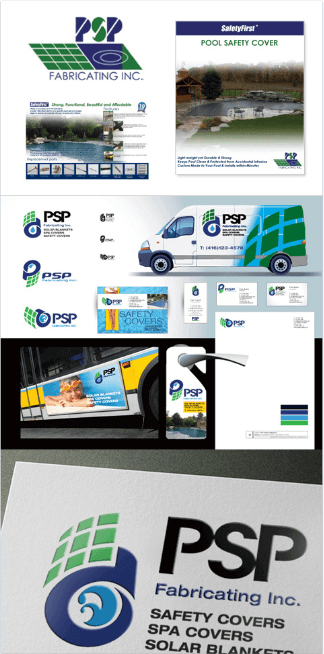 Case Study – When A Brand No Longer Explains its Benefits to the Customer
Case Study – When A Brand No Longer Explains its Benefits to the Customer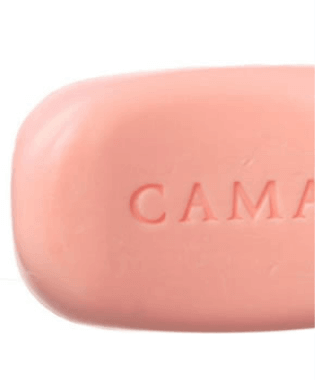 Case Study – When A Brand Fails to Check Cultural Differences
Case Study – When A Brand Fails to Check Cultural Differences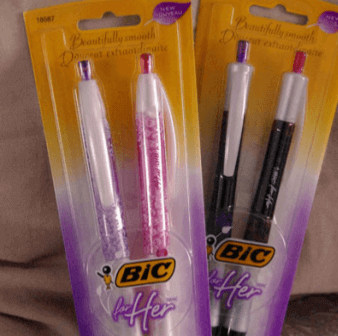 Case Study – When a Brand’s Visual Identity Fails to Impress
Case Study – When a Brand’s Visual Identity Fails to Impress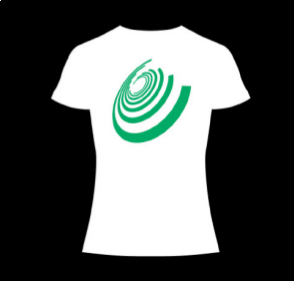 Case Study – Intriguing Staff Uniforms to Increase Brand Awareness
Case Study – Intriguing Staff Uniforms to Increase Brand Awareness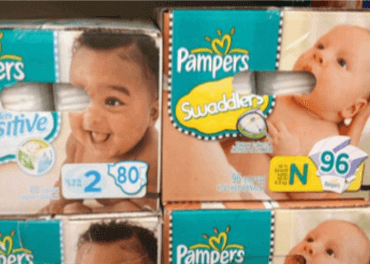 Case Study – When a Big Brand Gets its Packaging Wrong
Case Study – When a Big Brand Gets its Packaging Wrong